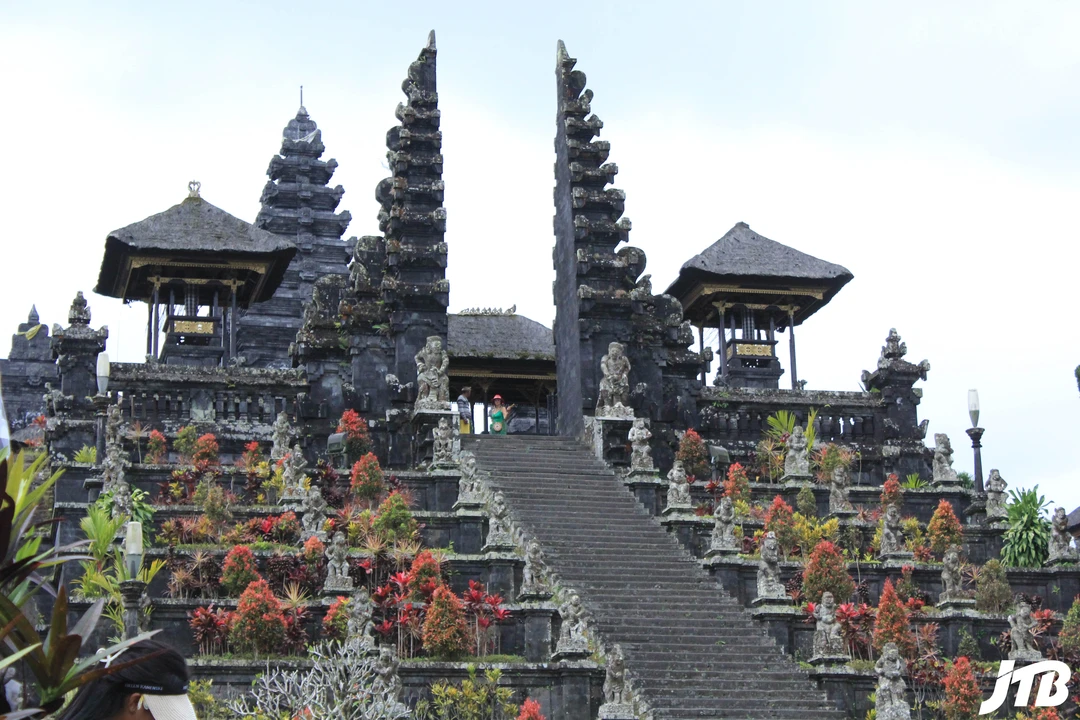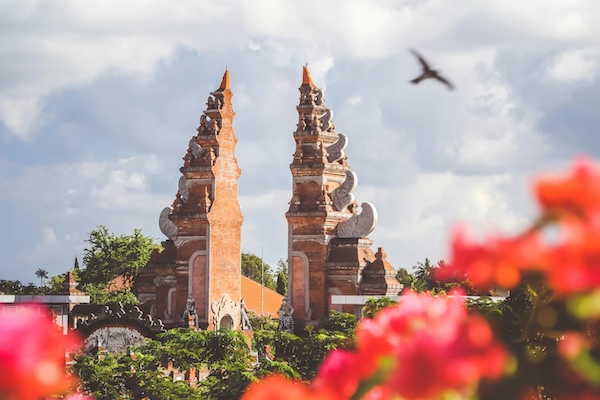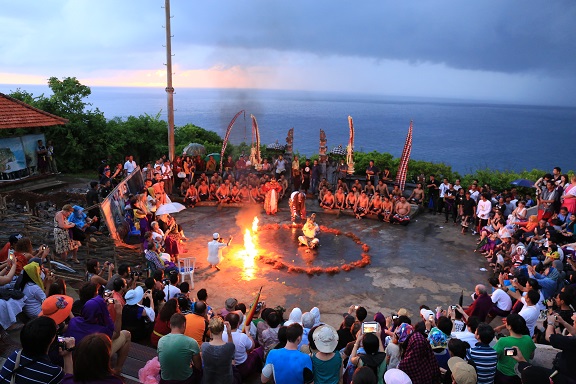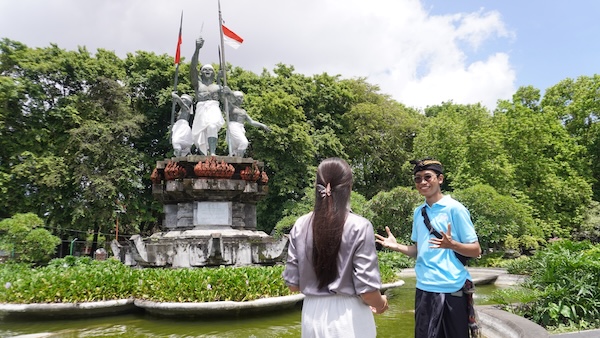Mystical Sanctuaries : The Ancient Temples of Bali- Bali, often referred to as the ‘Island of the Gods,’ is not just a paradise for surfers and beach lovers but a profound spiritual haven, rich in cultural heritage and religious significance. The island’s landscape is dotted with over a thousand temples, each telling a story of faith, tradition, and artistic excellence. These temples, or ‘Pura’ as they are known in Balinese, serve as the cornerstone of Balinese Hinduism, which blends elements of Hindu, Buddhist, and indigenous animist practices.
Balinese temples are more than just places of worship; they are deeply integrated into the daily life of the locals, playing a vital role in the community and the spiritual life of the Balinese people. Each temple is uniquely tied to the community’s geographic and familial ties, making them central not only to religious activities but also to social functions.
You might also like: Bali Archeology: Museum, Ancient Temple Gunung Kawi & Goa Gajah Temple Tour
As you set off to explore these enchanting sanctuaries, you will discover that each temple has its own schedule of festivals and ceremonies, which are based on the 210-day Balinese Pawukon calendar rather than the Gregorian calendar. This frequent celebration infuses Bali with a perpetual sense of festivity and color, inviting both the devout and the curious to witness the island’s vibrant cultural fabric.
The temples of Bali offer a glimpse into the soul of the island, inviting visitors to experience a profound connection with a tradition that has nurtured and sustained the Balinese way of life through centuries. As we take you through the mystical gates of Bali’s most sacred sites, prepare to be transported into a world where every stone tells a story, and every ritual is a bridge to the divine.

The History of Balinese Temples
Balinese temples are the epitome of the island’s spiritual heritage, dating back to the 9th century when Hinduism first arrived in Bali from Java. These temples, central to Balinese Hinduism, integrate philosophies from Hindu and Buddhist origins, evolving into unique religious practices that are distinctively Balinese. Each temple, structured to symbolize the cosmic balance between the spiritual and the natural world, offers a portal to Bali’s ancient past.
Known as the ‘Mother Temple’, Pura Besakih is the most important, the largest, and the holiest temple in Bali. Nestled on the slopes of Mount Agung, it is a complex of 23 separate temples, each serving a specific purpose. Visiting during the annual Odalan festival, you witness a breathtaking array of rituals, vibrant offerings, and a throng of devotees immersed in their spiritual practices. The grandeur and spiritual ambiance of Besakih invite visitors to experience a profound sense of reverence and peace.

Architectural Features
Balinese temple architecture is a feast for the eyes. The split gate, or ‘Candi Bentar’, welcomes you into the temple, symbolizing the balance between the spiritual and earthly realms. The multi-tiered ‘Meru’ towers, with their thatched roofs of black palm fiber, signify the revered mountains, believed to be the abode of the gods. Intricate carvings of myths and deities adorn the red bricks and volcanic stone, narrating tales of gods and demons etched into the walls of time.
Temples in Bali are vibrant hubs of life, hosting ceremonies that are as frequent as they are elaborate. The rituals, deeply symbolic, often involve music, dance, and offerings known as ‘Canang sari’. Visitors may witness or even participate in these ceremonies, offering a deeper understanding of the spiritual dedication of the Balinese people. It is essential, however, to approach these experiences with respect, adhering to local customs such as wearing a sarong and sash when entering temple grounds.

Off-the-Beaten-Path Temples
For those eager to explore beyond the well-trodden paths, Bali has many lesser-known temples that offer a more serene and personal spiritual experience. Pura Luhur Batukaru, set amidst the lush forests of Mount Batukaru, offers tranquility away from the tourist crowds. Another hidden gem, Pura Taman Ayun, boasts stunning gardens and moats reminiscent of a royal temple garden. These sites offer a quieter, more contemplative experience, allowing for personal reflection and connection with nature.
You may also like : Bali Affordable Tours and Destination
Travel Tips for Visiting Balinese Temples

Visiting temples in Bali can be one of the most enriching parts of your travel experience on the island. To help you make the most of your visits, here are some essential tips to keep in mind:
1. Dress Appropriately
Balinese temples require modest dress, which means both men and women should cover their shoulders and legs. A sarong, often available for rent or purchase at larger temples, is a must-have, and wearing a sash around your waist is also a common requirement. These garments are not only respectful but also add to the experience of visiting these sacred places.
2. Understand the Etiquette
When entering a temple, it’s important to follow local customs:
- Always enter the temple with your head bowed slightly as a sign of respect.
- Do not walk in front of people who are praying.
- Avoid pointing your feet at the shrines or sitting higher than the priest or the offerings.
- Photography is allowed in most areas, but always look for signs or ask for permission before taking photos, especially during ceremonies.
3. Visit Timing
Try to visit early in the morning or late in the afternoon to avoid the peak tourist times, which not only makes for a more serene visit but also provides the best light for photography. Also, visiting during local religious ceremonies can be a profound experience; however, it’s crucial to maintain respect and discretion during these times.
4. Cultural Sensitivity
Temples are not just tourist attractions; they are places of worship and hold deep significance for the local community. Show respect by observing quietly and not interrupting ceremonies. Participate only if invited, and always ask questions politely.
5. Entrance Fees and Donations
Most temples have a small entrance fee or request a donation. These contributions are used for the upkeep of the temples and to support the local religious community. Always carry small notes to make it easier to pay the fees or make donations.
6. Guide Services
Consider hiring a local guide when visiting some of the more historical or complex temple sites. Guides can provide deeper insights into the symbolism, architecture, and religious practices associated with Balinese temples, enhancing your understanding and appreciation of what you’re witnessing.
7. Health and Safety
Bali’s climate can be hot and humid, so it’s important to stay hydrated and wear sunscreen. Some temples are located in more rural areas that might have uneven pathways, so wear comfortable walking shoes. Be cautious with wildlife, especially monkeys, which can be present at some temple sites and can grab loose belongings.
You may also like : Temple Destination in Bali
Reflections on Bali’s Temple Journey

Our journey through Bali’s sacred temples offers more than just a glimpse into architectural grandeur or historical depth; it provides a window into the soul of Bali. These temples stand as serene custodians of the island’s rich cultural and spiritual heritage, offering peace and reflection to all who visit. Through every intricately carved gateway and every quietly whispered prayer, Bali’s temples reinforce their timeless relevance and the deep-rooted spirituality that permeates daily Balinese life.
As we leave behind the mystic aura of these sanctuaries, we carry forward a piece of their serenity and a deeper appreciation for the cultural intricacies that define Bali. Whether you’ve walked through the misty grounds of Besakih or found tranquility in the less traveled paths of Batukaru, each temple tells a story of devotion, community, and timeless tradition.

Engage with the Mystique of Bali
Are you ready to explore the spiritual landscapes of Bali? Whether you are planning your journey or dreaming of future travels, I encourage you to dive deeper into the rich tapestry of Balinese culture. Share your thoughts and experiences in the comments below or on social media—your insights enrich our community’s understanding and appreciation of unique global heritages.
Don’t forget to subscribe for more travel tips, stories, and guides. Let’s keep exploring together, finding new adventures and stories around every corner. If you enjoyed this post, please consider sharing it with friends or fellow travelers eager to discover the mystical sanctuaries of Bali.
Thank you for traveling with us through the sacred temples of Bali, where every stone and every ceremony tells the story of a vibrant, living culture. Stay curious, and keep exploring! – Kura-Kura Bus
BEST PLACE TO GO!






